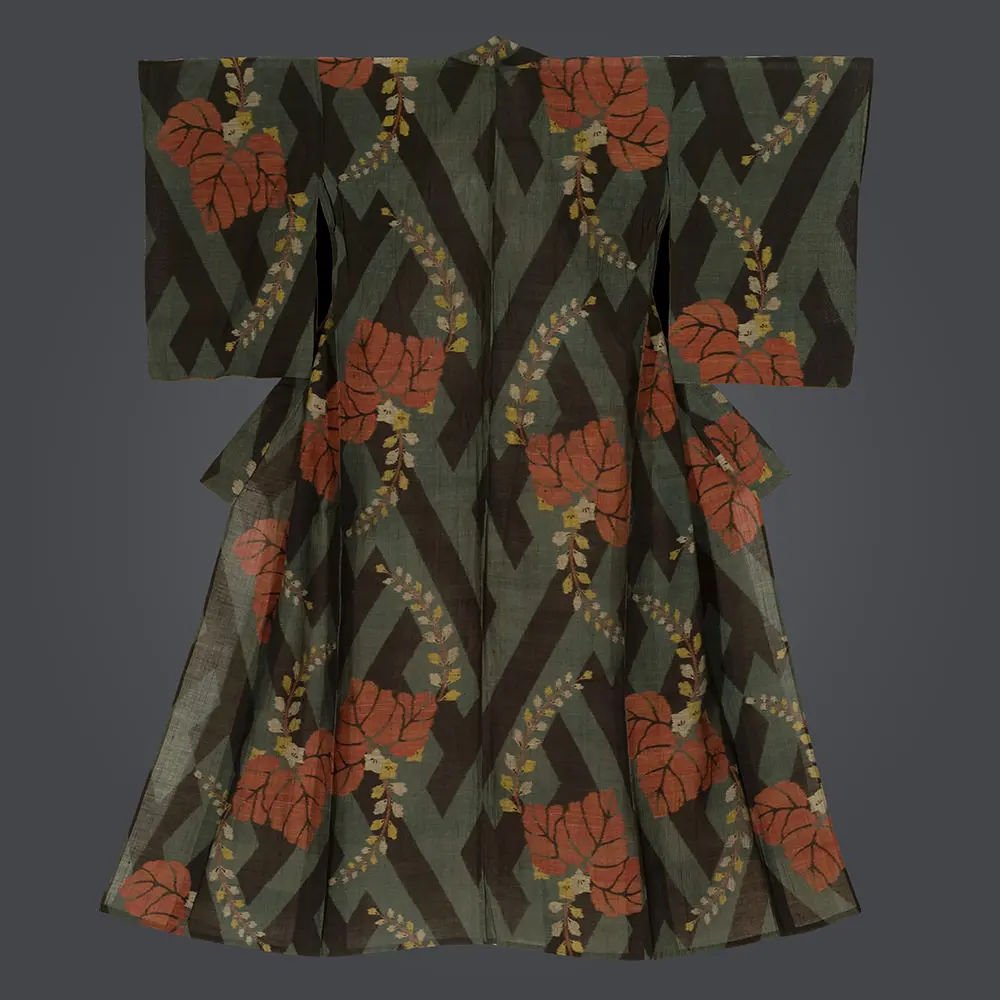This summer kimono employs the traditional chijimi weaving technique that transforms ramie fibers into a remarkably cooling fabric ideal for Japan's humid summers. The garment's dominant motif features bold paulownia leaves (kiri) arranged in a continuous linked pattern that forms what is traditionally known as a sauwastika or left-facing swastika design. In Japanese decorative arts, this ancient symbol (manji) has been used for over a millennium as an auspicious motif representing good fortune, prosperity, and the eternal cycle of life, completely separate from its later Western associations. The paulownia itself carries deep cultural significance as the imperial crest of Japan, symbolizing honor, virtue, and protection, making this combination particularly meaningful in Japanese aesthetic tradition.
The artistic arrangement demonstrates the Japanese mastery of wave patterns, where geometric repetition creates visual rhythm and movement across the textile surface. The close-ups reveal the distinctive texture of meisen-omeshi ramie weaving, where the characteristic shibo (fine wrinkles) create a subtle dimensional quality that catches light beautifully. This textile exemplifies the practical artistry of Japanese summer clothing, where the ramie's natural properties provide breathability while the sophisticated dyeing and weaving techniques create visual interest. The earth-toned palette of deep greens, russets, and golden yellows reflects the natural world while maintaining the understated elegance characteristic of Japanese design philosophy, where function and beauty achieve perfect harmony.
Despite its remarkable qualities, there are two minor holes near the collar, one of which has been patched. It measures 51 inches (130 cm) from sleeve-end to sleeve-end and standing at 63 inches (160 cm) in height
.avif)






